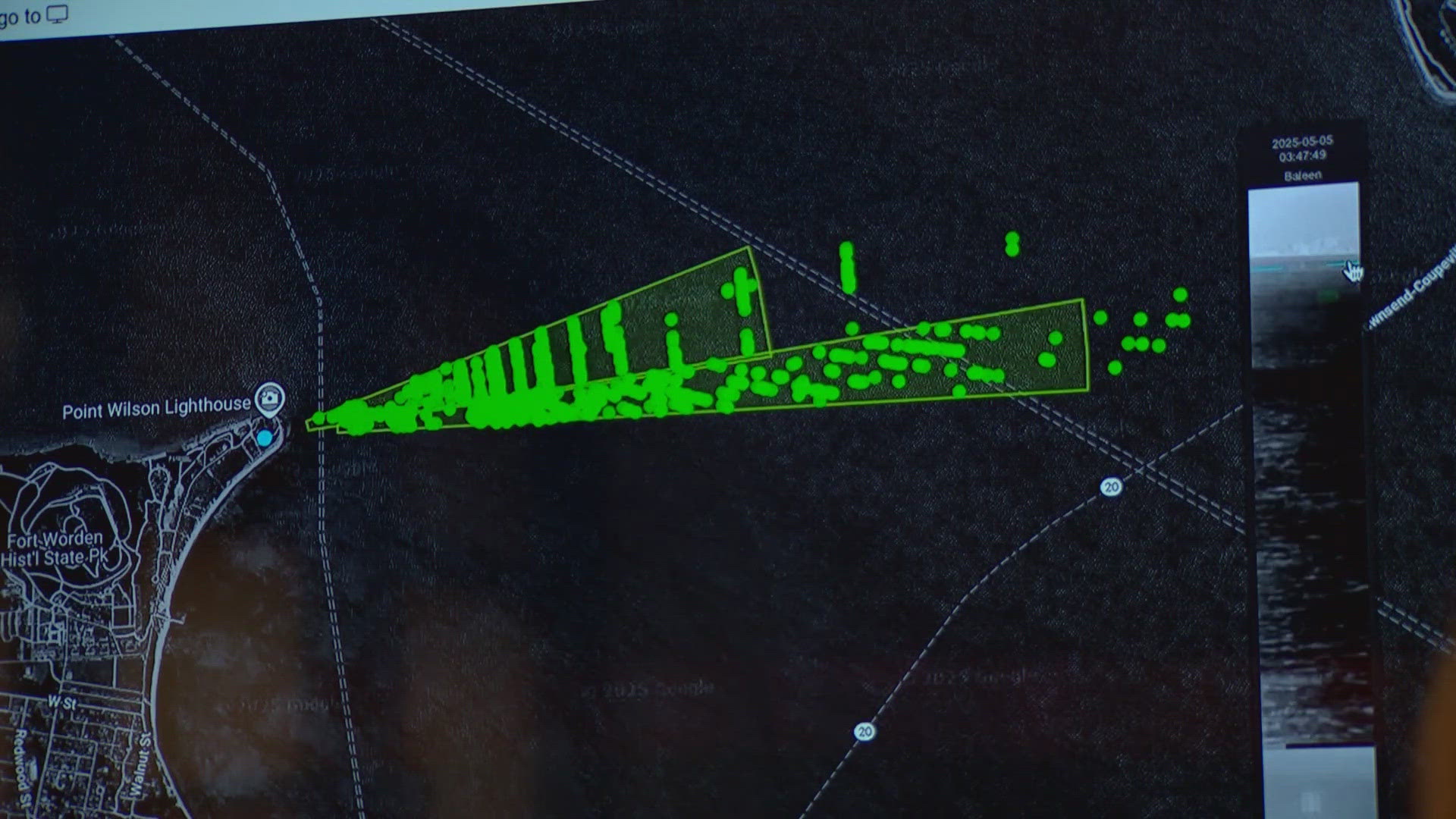PORT TOWNSEND, Wash. — A new, first-of-its-kind infrared thermal camera that will help monitor whale movements is up and running near Port Townsend.
Launched by nonprofit Quiet Sound, this technology uses thermal imagery to detect when whales are present. It’s positioned near Port Townsend at what is essentially the entrance to Puget Sound, a highly traveled passageway for orcas.
“For us, it’s a game changer. It's helping us to up our game enormously,” said Quiet Sound Program Manager Gonzalo Banda-Cruz, who is responsible for whale detections and alerts.
Banda-Cruz said one of the biggest holes in the system is knowledge of where the orcas are at night. The best tool they currently have to track the movement of orcas is the Whale Report Alert System, which is largely user-generated reports from people who spot whales around Puget Sound. It also uses hydrophones, which are underwater tools that listen for orca sounds and calls.
This creates an issue at night, when people can no longer see and report orca sightings.
“If they’re not communicating, they’re not clicking or singing, no one would know they’re there,” said Banda-Cruz, adding “We will use human sightings, there are some hydrophones or underwater microphones out there that are also alerting us, but until now, we didn’t have a reliable source of night detection.”
This knowledge is huge for protecting orcas. Orcas rely on sound to find food and if there are nearby large vessels, the noise pollution makes it hard for them to feed. Banda-Cruz said the best tactic to prevent this intervention from captains is for large boats to slow down, which cuts down noise pollution by 50%.
With this camera, boat operators will have a better idea of orca locations, even at night, and be able to slow when needed. Banda-Cruz said both ships and orcas are incredibly active 24/7, so this new data helps fill a large gap in information.
Banda-Cruz believes this technology is 100% accurate. The infrared camera captures visuals of areas of heat, and artificial intelligence has been trained to look for the signs of what kind of animal it is. Once AI verifies that it’s a whale, an expert then analyzes it and confirms that it’s accurate. Then, it’s sent out to the whale report system in less than a minute.
This camera launched in mid April and Banda-Cruz said the first killer whale reading was observed within just a few hours. Currently, only commercial vessel operators are able to tap into the network to obtain the data.
Large operations like Washington State Ferries use this information daily.
Reed Calkins is a ferry captain and said he relies heavily on the reporting network when he’s operating a ferry and notices the difference when the sun goes down and notifications for sightings go silent.
“It’s definitely a game changer because where it is now, it really relies on us scanning the horizon and it’s hard for us to notice a whale when we’re focused on other vessels and navigation,” said Calkins

